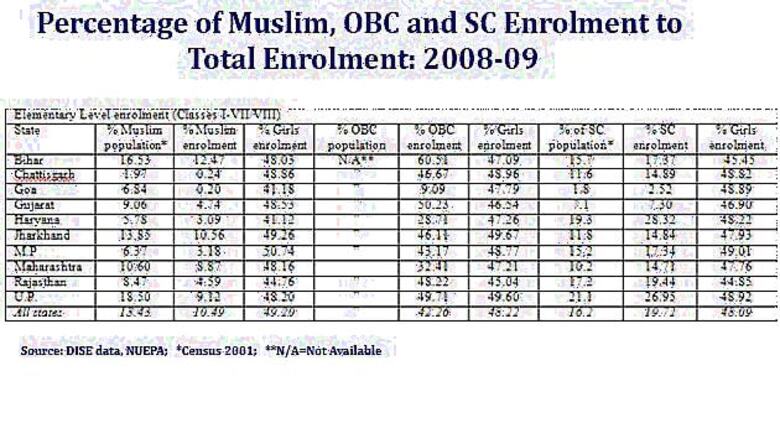
views
New Delhi: For the last few months, reservation for minority communities, particularly Muslims, is a subject of fierce political debate in India. The approval of 4.5 percent sub-quota in government jobs and educational institutions for minorities was presumably to improve their economic and educational backwardness. However, as the data on the enrolment of Muslims in elementary schools shows, reservation in jobs and in higher educational institutions cannot be the only solution to bring the community into the mainstream.
The data, released by the National University of Educational Planning and Administration (NUEPA), suggests that the enrolment of Muslim children at the elementary level is nowhere near the national average. With a 10.49% enrolment in elementary schools, Muslims fare worse than the OBCs (42.26%) and the SCs (19.72%). In the Hindi-speaking states (Bihar, Chhattisgarh, Haryana, Jharkhand, Madhya Pradesh and Rajasthan) as well as in Goa, Gujarat and Maharashtra, the gap in enrolment of Muslims at the elementary level to the proportion of their population is higher.
Further, the comparison of enrolment at elementary level between the SCs, OBCs and Muslims shows that the OBCs and SCs are doing much better than Muslims. The low enrolment percentage shows that even the Sarva Shiksha Abhyan (SSA), the national flagship programme for the universalisation of elementary education, has not been effective in bringing the Muslim children to primary schools despite the minorities being the special focus of the programme.
There are various factors, according to the study. On top is of course their economic condition. Most of the parents preferred to engage their children in economically-productive activities rather than getting them educated.
Another problem was their ghettoisation. Compared to the overall urban population in India (27.8 %), a higher percentage of Muslims (35.7 %) live in cities, according to the Sachar Committee report. However, most of the urban Muslims live in ghettos where there are generally no or fewer schools.
During a study conducted in the Muslim localities of Delhi by the Cenre of Media Studies Social, it was observed that in areas where schools were available, they were found to be inadequate to the proportion of the population of the localities. It was also observed that due to insufficient open spaces in these localities, there was no scope to open new schools. Alternative arrangements such as mobile schools may address the problem.
On a positive note, the data shows that the percentage of girls in the total Muslim enrolment is much better (49.20%) than even the OBC girls (48.22%) and SC girls (48.09%). The data therefore goes against the general perception that Muslims do not allow their girl child to go for formal education.
The moot question is: will the Right to Education Act ensure more opportunities for Muslim children and ensure a better future for them?
(With inputs from Mumtaz Ahmed of Centre for Media Studies, Delhi)
















Comments
0 comment